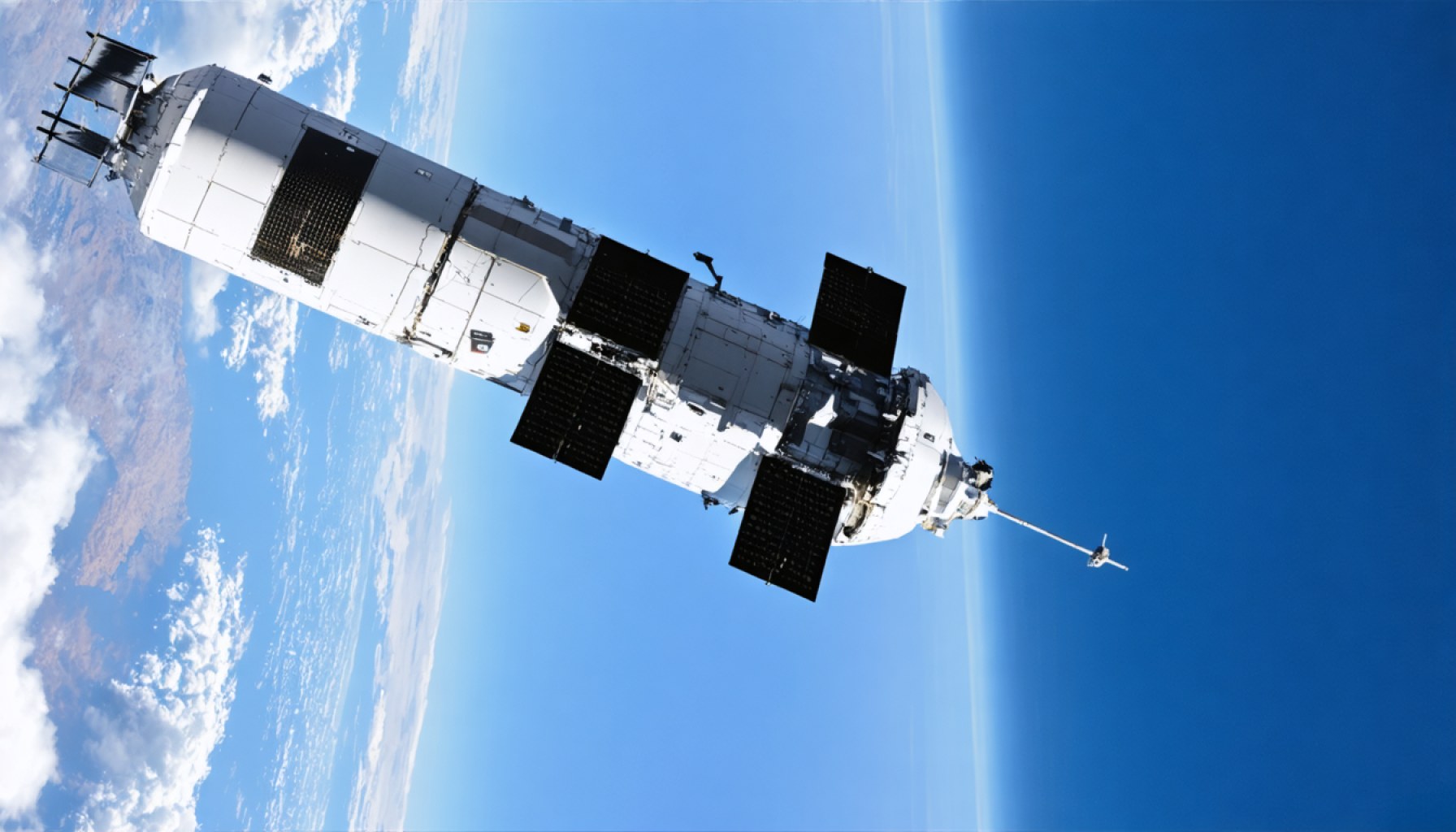- SpaceX’s Falcon 9 launched 21 Starlink satellites from Kennedy Space Center, aiming to enhance global connectivity.
- Thirteen satellites feature Direct to Cell technology, promising to eliminate mobile dead zones.
- Starlink seeks to provide internet access to over 100 countries, reducing the digital divide in rural areas.
- Critics highlight concerns about space congestion and the environmental impact of increasing satellite numbers.
- The endeavor underscores the need to balance technological advancement with environmental stewardship.
A veil of anticipation lifted off the Kennedy Space Center in Florida as SpaceX’s Falcon 9 rocket thundered into the sky, shattering the early morning tranquility with fiery brilliance. Its payload of 21 Starlink satellites surged towards the heavens, seeking their rightful place in the sprawling void, revealing humanity’s relentless quest to knit the world closer together.
Amidst these orbiting emissaries, thirteen housed a technological marvel: Direct to Cell. This pioneering feature aims to transform mobile connectivity by obliterating dead zones that mar the communication landscape, gifting even the most remote corners of the Earth an unbroken digital presence. A single hour after its explosive departure, the rocket gleefully scattered its charges, tasking them with the mission to weave a vast, unseen net around our planet.
Within the rapidly expanding constellation, now comprising thousands, Starlink’s ambition shines brightly—providing internet to more than 100 countries, it promises to bridge the digital divide that has long beset rural and underserved communities. Yet amidst accolades of innovation, not all voices sing in unison.
The cosmos, once an untouched frontier, now brims with human-engineered vessels. Critics raise the specter of space congestion: a cluttered realm fraught with the perilous dance of satellites, each maneuvering to avoid the catastrophic embrace of collision. Concerns ripple through scientific circles, pondering the long-term environmental effects of this metallic migration—from space debris perilously loitering in low Earth orbit to atmospheric pollution.
This celestial endeavor reflects a broader narrative of progress, containing both a promise of unprecedented connectivity and a pressing caution about sustainability. As we forge ahead, the balance between innovation and environmental stewardship stands as a crucial testament to our collective priorities.
In this dance of technology and nature, the tale remains unwritten. Humanity finds itself at a critical juncture, faced with the challenge of embracing the boundless possibilities of connectivity while safeguarding the sanctity of our cosmic neighborhood. The skies above hold the answers, waiting for us to script our future wisely.
How SpaceX’s Starlink Is Reshaping Global Connectivity: Innovations and Challenges Ahead
Introduction
SpaceX has once again made headlines with its Falcon 9 rocket launch, deploying 21 new Starlink satellites from the Kennedy Space Center in Florida. While the immediate achievement centered on the successful deployment itself, the broader implications hint at profound changes in global connectivity and lingering controversies.
Starlink’s Direct to Cell: A Game Changer in Mobile Connectivity
What Is Direct to Cell?
Direct to Cell technology, incorporated in 13 of the latest satellites, aims to provide consistent mobile connectivity by eliminating dead zones. This innovation holds the potential to revolutionize communication, enabling even the most remote areas to access reliable digital services.
Real-World Use Cases:
1. Disaster Relief: Direct to Cell could ensure that emergency response teams stay connected during natural disasters, where infrastructure is often damaged or destroyed.
2. Remote Infrastructure Control: Industries such as mining and oil extraction in isolated areas can greatly benefit from unbroken communication lines provided by this technology.
3. Maritime Communications: Ships in international waters could maintain internet connections, aiding in navigation, logistics, and crew communications.
The Growing Starlink Constellation
Features and Specs:
1. Network Expansion: Starlink is now operational in over 100 countries, bridging a significant portion of the digital divide, especially in rural and underserved regions.
2. Current Constellation: With thousands of satellites in orbit, Starlink continues its mission to offer global internet coverage.
Controversies and Limitations:
1. Space Congestion: With an ever-growing number of satellites, concerns about space congestion have increased, highlighting the potential for collisions and the resultant space debris.
2. Environmental Impact: Critics worry about the long-term effects of atmospheric pollution from rocket launches and the sustainability of constantly increasing satellite numbers.
Pros and Cons Overview
Pros:
– Global Internet Access: Enables connectivity in areas with little to no infrastructure.
– Technological Innovation: Direct to Cell and other technologies keep pushing the boundaries of communication capabilities.
Cons:
– Orbital Debris Risk: Potential for space junk increases with each deployment.
– Regulatory Hurdles: Different countries have varying regulations concerning satellite operations.
Future Market Forecast and Industry Trends
Market Predictions:
– The satellite internet market is projected to experience significant growth, driven by increased demand for connectivity and advancements in satellite technologies.
Emerging Industry Trends:
– Partnerships Between Telecom Giants and Satellite Providers are expected to enhance service coverage and innovation.
Conclusion: Balancing Innovation with Responsibility
As SpaceX’s Starlink endeavors to forge a new era of global connectivity, it is vital that innovation is coupled with sustainable practices. Strategic measures must be employed to mitigate issues like space debris and environmental impact, ensuring that technological advances do not outstrip our capacity for environmental stewardship.
Actionable Recommendations:
1. Prioritize Regulatory Compliance: Companies should work closely with international space agencies to establish and adhere to debris mitigation guidelines.
2. Invest in Sustainable Technology: Innovate with a focus on reducing ecological impact, such as employing reusable rocket stages and designing satellites with deorbiting capabilities.
3. Foster Public-Private Partnerships: Collaborative efforts can help integrate satellite technologies into broader connectivity strategies to maximize benefits and minimize risks.
For more on the latest advancements, explore insights at SpaceX.
